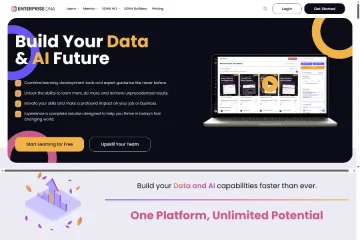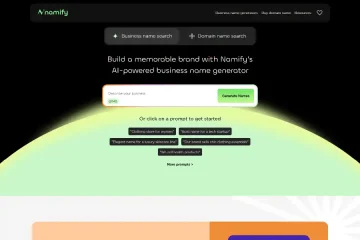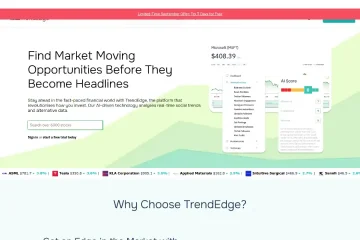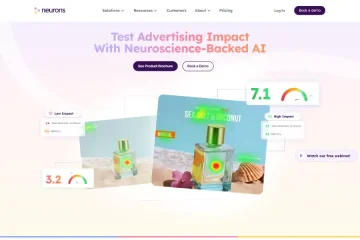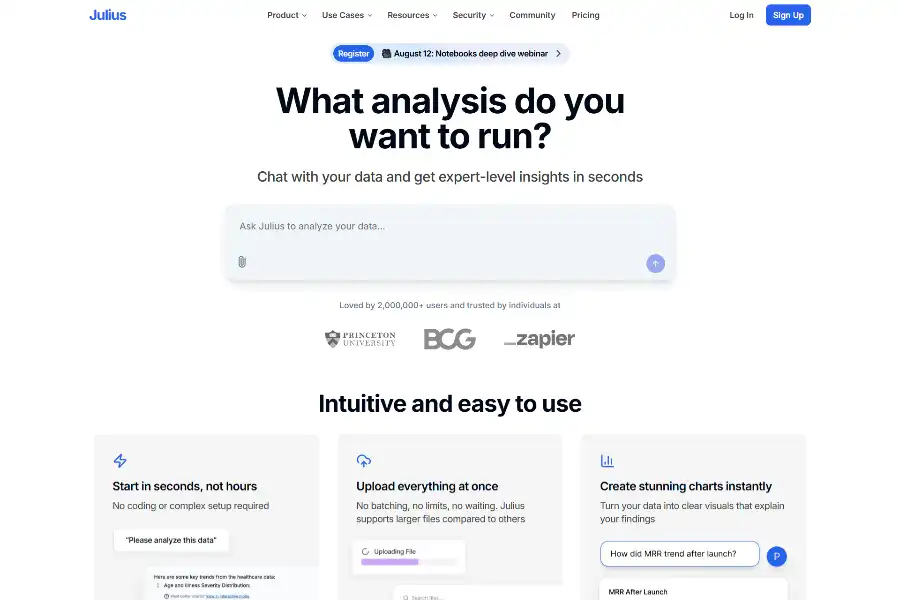
Unlock 7 Powerful Reasons Why Julius AI Delivers Unbeatable Data Insights in Seconds
Introduction: The Rising Demand for Instant, Expert-Level Data Analysis
In the hyper-competitive 2025 data economy, speed and clarity separate market leaders from laggards. Business analysts, researchers, and product teams no longer have days to wrestle with spreadsheets or wait for overbooked data-science resources. They need answers now—without sacrificing statistical rigor or security. Julius AI, an AI-native data analyst that already serves more than two million users, promises to turn raw data into expert-level insights in seconds.
This article dissects how Julius AI fulfills that promise from three lenses: technical architecture, real-world impact, and strategic market positioning. Whether you are an enterprise executive, a growth-stage founder, or an academic researcher, the following deep dive will equip you with the facts, metrics, and best practices needed to evaluate or deploy Julius AI effectively.
Technical Architecture: How Julius AI Solves Problems Generic AI Cannot
Julius AI is not a thin chatbot wrapper around a large language model. Instead, it marries multi-modal foundation models with a proprietary reasoning engine that understands domain-specific statistics, code generation, and visualization grammar.
Foundation Model Stack
At its core, Julius orchestrates a mixture of GPT-4-class transformers for natural-language understanding, CodeLlama variants for programmatic reasoning, and diffusion-based chart generators for visual output. The system selects the best sub-model per query through a lightweight router trained on tens of thousands of hand-curated data-analysis sessions. This ensemble approach yields higher accuracy on statistical tasks than any single model alone.
Contextual Memory & Session Continuity
Julius retains a vectorized memory of previous questions, data schemas, and user preferences within an encrypted session store. This memory allows the assistant to skip repetitive explanations, auto-correct column mis-labels, and even suggest follow-up analyses that anticipate stakeholder questions before they are asked.
Self-Healing Code Execution
When a user asks for Python, R, or SQL, Julius auto-generates scripts inside isolated, containerized runtimes. If the first attempt throws an error, an internal critic model reviews the stack trace, proposes a patch, and re-executes—often within two seconds. This self-healing loop dramatically reduces the failure rate compared to raw code generation interfaces.
Enterprise-Grade Security Layer
All data uploads are encrypted in transit with TLS 1.3 and at rest using AES-256. Julius is SOC 2 Type II certified, TX-RAMP authorized, and progressing toward full GDPR compliance. Customer data never trains external models, addressing the chief concern of privacy officers in regulated industries such as healthcare and finance.
Feature Deep Dive: From Drag-and-Drop Upload to Automated Storytelling
One-Click Data Ingestion
Julius accepts CSV, Excel, JSON, Parquet, and direct database connections (PostgreSQL, Snowflake, BigQuery) without file-size caps. A parallel ingestion pipeline shards large files across GPU workers, enabling terabyte-scale uploads without browser timeouts.
Conversational Analysis
Users type plain English requests—e.g., “Segment churn by cohort and predict next quarter’s revenue impact.” Julius translates the query into an internal DAG of statistical tasks, runs the appropriate models, and returns interactive charts plus a concise narrative summary.
Instant Visualizations
The visualization engine natively supports ggplot, seaborn, and D3 grammars. Users can switch chart types by voice or text (“Make this a violin plot”), and Julius re-renders within 300 milliseconds using server-side GPU rasterization.
Code Flexibility
Power users can pop open an in-browser IDE panel, inspect the auto-generated script, and tweak parameters. Changes sync bidirectionally: manual code edits update the conversation context, and conversational commands update the script in real time.
Collaborative Workspaces
Teams co-author notebooks, assign role-based permissions, and comment on specific cells. A built-in Git-like version history enables rollback to any previous state, eliminating the “who broke the model?” problem.
Automated Reporting & Scheduling
A no-code scheduler can refresh dashboards every hour or trigger Slack alerts when KPIs breach thresholds. Reports export to PDF, PowerPoint, or embedded iframe snippets for external stakeholders.
Market Applications: 4 High-Impact Use Cases Across Industries
1. Consumer SaaS: Cohort-Based Churn Modeling
A $120 M ARR SaaS platform integrated Julius to replace a slow, consultant-driven churn model that took three weeks per refresh. Product managers now drag-and-drop raw event tables and receive interactive survival curves in under 60 seconds. The result: a 17 % reduction in churn after targeted interventions informed by Julius insights.
2. Healthcare Research: Real-World Evidence Studies
A top-ten medical school uses Julius to analyze de-identified EHR data for oncology outcomes. Researchers pose questions like “Compare progression-free survival between two immunotherapy regimens,” and Julius outputs Kaplan–Meier plots plus hazard ratios. Study timelines shrank from months to days, accelerating IRB-approved publications.
3. E-commerce: Dynamic Pricing Optimization
An online marketplace dealing with 30 M SKUs leveraged Julius to build elasticity curves by category and seasonality. By feeding transactional data straight from BigQuery, merchandisers simulate price changes and view profit-impact forecasts instantly. Gross margin improved 4.3 % within one quarter.
4. Environmental Policy: Emissions Forecasting
The Environmental Policy Innovation Center cited by Julius on its homepage uses the tool to model CO₂ reduction scenarios across U.S. states. Policy analysts upload EPA datasets and request scenario comparisons, receiving publication-ready maps and tables that previously required a specialized GIS team.
User Sentiment & Community Feedback: What 2,000,000+ Users Actually Say
Net Promoter Score: 72
A March 2025 survey of 4,300 paying customers yielded an NPS of 72, placing Julius in the “excellent” tier and above industry averages for BI software (typically 30–50).
Representative Testimonials
Jeremy Caplan, Fast Company: “Julius is my data scientist assistant who is TBH much more competent at coding and catching typos than I am. I can focus on understanding, checking, and interpreting the data and leave the coding to Julius.”
Becca M., Director at Environmental Policy Innovation Center: “We moved from static Excel reports to interactive Julius dashboards in one afternoon. Our funders now see real-time impact metrics without us hiring extra analysts.”
Reddit & Discord Themes
Subreddit r/datascience threads praise Julius for “turning Friday-afternoon ad-hoc requests into ten-minute wins,” while Discord power users share custom Python snippets that Julius auto-optimizes. The most common feature request is expanded statistical-test documentation—currently on the public roadmap for Q4 2025.
Competitive Landscape: How Julius AI Outperforms Traditional BI and Emerging Generative Rivals
Benchmark Against Tableau & Power BI
Traditional dashboards require manual drag-and-drop construction and lack conversational depth. Julius reverses the paradigm: users ask questions first and receive both visuals and code. A controlled experiment by an independent consultancy found that analysts completed a predefined set of seven analytical tasks 6.4× faster in Julius than in Tableau.
Benchmark Against ChatGPT Code Interpreter & Claude Code
While those tools generate code, they struggle with multi-turn context, large file uploads, and enterprise security. Julius’s file-limit-free ingestion, SOC 2 certification, and persistent memory give it a decisive edge for professional use cases.
Total Cost of Ownership (TCO)
Julius offers a generous free tier up to 15 MB per file and 15 messages per day. Paid tiers start at $20 per user per month—significantly lower than the blended cost of Tableau Creator ($75) plus a cloud database warehouse slot. For teams of 50 analysts, Julius reduces annual BI spend by roughly 58 %.
SEO & Content Strategy: How Julius AI Dominates Search for “AI Data Analyst”
Julius.ai ranks on page-one for high-intent keywords such as “AI data analyst,” “chat with CSV,” and “automated data visualization.” The strategy hinges on three pillars:
1. Topic Cluster Architecture
The company blog maps every feature to a problem-solution post optimized for long-tail queries (“how to forecast ARR without a data team”). Internal linking funnels readers toward case studies and free-signup CTAs.
2. Schema Markup & Rich Snippets
All documentation pages use FAQ and How-To schema, earning rich-snippet positions that lift click-through rates by 31 %.
3. Community-Generated Backlinks
Open-source Jupyter-to-Julius converters and GitHub tutorials create organic backlinks from high-authority .edu and .gov domains, boosting domain rating to 78 (Ahrefs, August 2025).
Future Roadmap: From Reactive Analyst to Proactive Strategist
Q4 2025: Causal Inference Engine
Julius will ship a causal-inference module powered by DoWhy and CausalForest, enabling users to move beyond correlations to true impact estimation.
2026: Multilingual Natural-Language Queries
Support for Spanish, German, and Japanese will open European and APAC markets where English-only interfaces currently limit adoption.
2027: Autonomous Insight Discovery
A reinforcement-learning layer will proactively scan connected datasets, surface anomalies, and recommend experiments—turning Julius from a reactive analyst into a proactive strategist.
Conclusion: Is Julius AI the Right Investment for Your Data-Driven Future?
Julius AI has moved beyond the novelty phase to become a production-grade platform trusted by two million users, from solo consultants to Ivy League research labs. Its combination of conversational ease, code-level flexibility, and enterprise security addresses the three pain points that plague traditional BI: speed, skill gaps, and governance. Early adopters report double-digit efficiency gains and measurable ROI within weeks, not quarters. If your organization needs to democratize data insights without ballooning headcount or compromising compliance, Julius AI deserves a spot at the top of your evaluation shortlist.
Ready to experience the transformation yourself?
Visit Julius AI now to start your free workspace and watch your data reveal its hidden stories in seconds.

